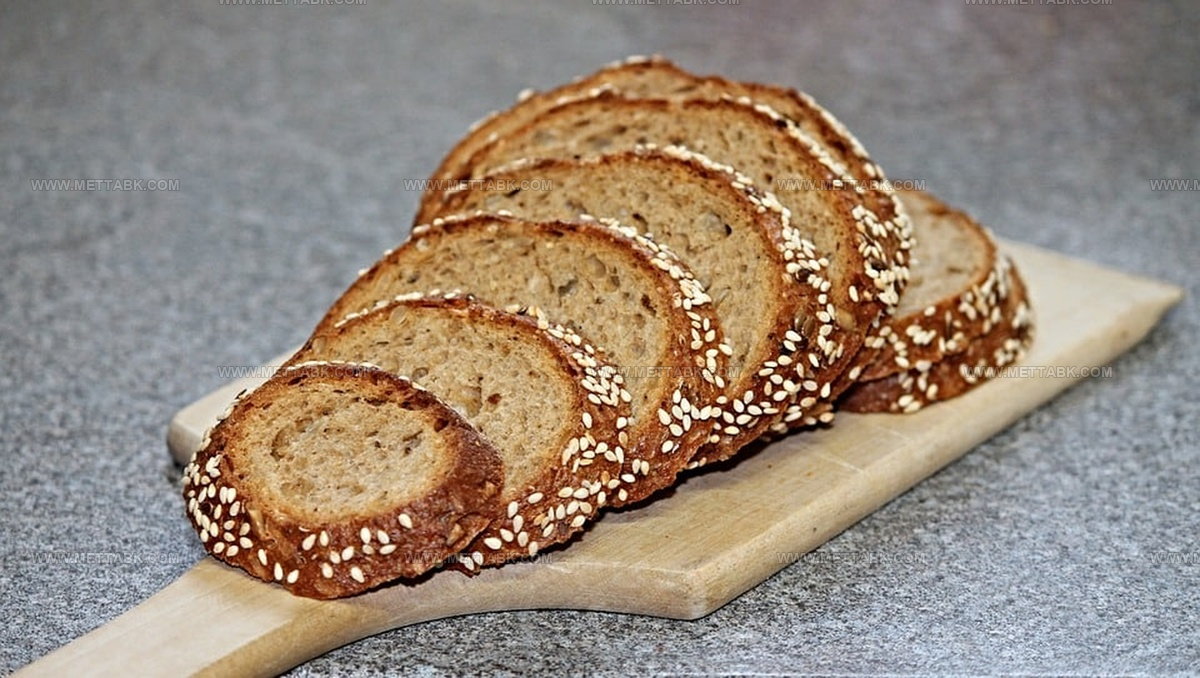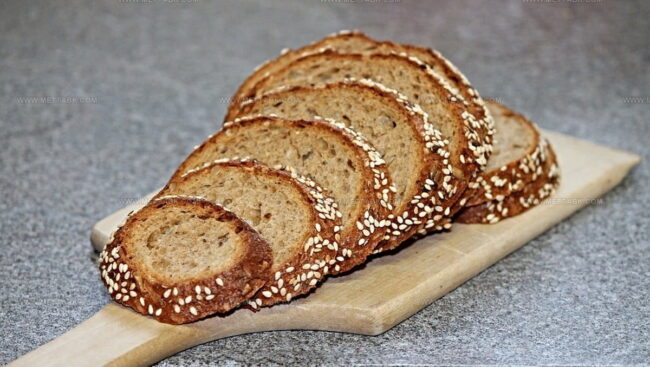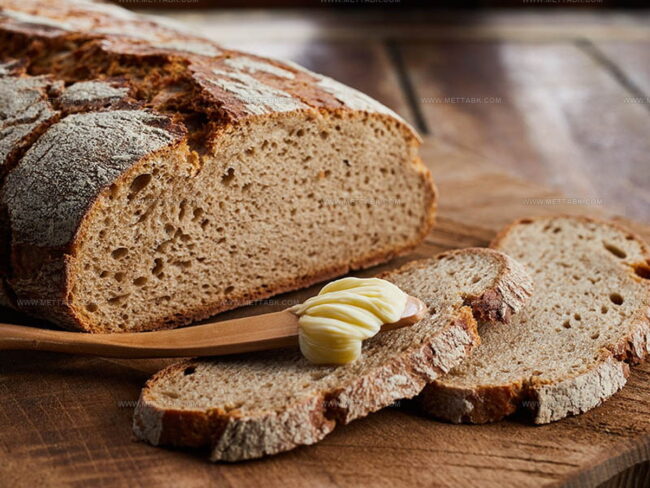What Does Rye Bread Taste Like? A Flavor Journey Worth Taking
Rye bread, a hearty staple in many cuisines, has intrigued food lovers with its distinctive characteristics.
Bakers and bread enthusiasts often debate the unique qualities that set this grain-based loaf apart from traditional wheat breads.
Its robust profile stems from the specific type of flour used in the baking process.
Some people find rye bread slightly challenging at first, while others become instant fans of its complex flavor nuances.
Numerous factors contribute to the bread's overall taste experience, including the specific recipe, fermentation method, and additional ingredients.
Regional variations add another layer of complexity to this fascinating bread type.
Your culinary journey into understanding rye bread's sensory experience starts here, promising to unveil the delicious secrets behind this remarkable bread.
Rye Bread: What It Tastes Like
Rye bread carries a distinct taste from mixing rye flour, caraway seeds, and yeast.
Sour notes come from adding acidic ingredients like sourdough culture or vinegar.
Flavor profiles lean towards sharp, tangy sensations.
These characteristics work wonderfully with hard cheeses, smoked meats, and cold cuts.
Compared to white bread, rye contains more fibre, shows deeper color, and offers bolder taste.
Ideal rye bread balances rye flavor with mild sourness, unlike intense San Francisco sourdough or German rye varieties.
Rye brings rich, earthy character that spreads across your tongue with complex depth.
Texture remains chewy and substantial.
Sandwiches benefit from rye bread's special qualities.
Unique flavor combinations shine with smoked meats and hard cheeses.
Soft texture makes lunch or dinner preparation simple.
Rye serves as an excellent sourdough alternative for bread enthusiasts.
Baking rye bread involves strategic ingredient selection.
Replacing water with vinegar increases sourness levels.
Additional vinegar creates more robust flavor profiles.
Some bakers find rye intensity challenging, but careful flour selection helps.
Light-colored rye flour works best for balanced results.
Does Rye Bread Have A Mint Taste?
Rye bread carries a unique flavor linked to sour or caraway notes.
Bakers often mix rye with sourdough and sometimes add caraway seeds.
Rye delivers an earthy taste with a sharp kick.
Rye flour contains more protein than wheat flour.
Breads made from rye turn out denser compared to wheat bread, with a tangy flavor and chewy feel.
Protein gives rye its signature sour taste.
Rye flour comes in different styles, each with its own level of sourness.
Medium-grain sourdough rye with a round shape and soft center works great for bread beginners.
Traditional rye bread offers a sharp, tangy taste that matches well with smoked meats and hard cheeses.
Its soft middle carries a bold flavor profile.
Shoppers can find rye at local grocery stores.
Standard purchase sizes include one-pound packages, with medium-grain artisan rye being most common.
Is Rye Bread Better For You Than White Bread?
Rye seems healthier than wheat.
Studies suggest rye bread could help you feel fuller and impact blood sugar levels differently compared to wheat bread.
Research involving 12 participants showed whole-grain rye bread caused less insulin release than white-wheat bread.
Insulin helps control blood sugar in our bodies.
High insulin levels connect with obesity and might increase chances of type 2 diabetes.
Rye contains significant soluble fiber, which helps reduce insulin reactions in your body.
Nutritional experts recommend rye bread made from 100 percent whole-grain sprouted rye flour.
Sprouting increases grain fiber content.
Sprouted rye contains more fiber and offers additional health benefits compared to standard rye options.
Is Rye Bread High In Carbohydrates?
Rye and white bread pack plenty of carbohydrates and share similar total carb amounts.
Key differences show up in rye bread's higher levels of fibre and important nutrients like vitamins and minerals.
Rye bread contains 48 grammes of total carbs per 100 grammes, which matches wheat bread closely.
Higher fibre amounts mean rye bread offers lower net carbohydrates compared to standard bread.
Low-carb diet followers should still see this as a substantial carb source.
Rye bread won't work well for strict keto eating plans.
Specialized keto-friendly rye bread recipes can help bread lovers match traditional rye bread flavours without heavy carb loads.
Rye Bread in World Cuisines
Rye bread is a hearty staple enjoyed in many countries, each with its own twist on flavor, texture, and traditional pairings:
Best Foods To Pair With Rye Bread
If you want to build a tasty sandwich with sliced rye bread, try some of these great filling ideas:
Mix and match your favorites to make a sandwich that’s just right for you!
Common Rye Bread Add-Ins (Seeds, Spices) and Their Impact on Taste
Rye bread often includes tasty add-ins like seeds and spices, which not only boost nutrition but also bring exciting new flavors and textures to each loaf:
Can You Eat Rye Bread On A Keto Diet?
Keto diet challenges bread lovers with its low-carb, high-fat approach since carbohydrates typically power most bread products.
Ketosis requires careful carbohydrate management, targeting between 20 and 50 grams daily.
Protein intake needs monitoring because excess protein can convert to glucose.
Standard rye bread contains 15g of total carbs per slice, making it problematic for keto followers.
Macronutrient composition of traditional rye bread creates significant obstacles for maintaining ketosis.
Positive developments include keto-friendly bread alternatives mimicking rye bread's characteristics.
Rye bread's dense, earthy texture actually works better for low-carb substitutions compared to lighter bread styles.
Multiple low-carb rye bread recipes circulate online.
Local health food stores and specialized markets might stock commercial low-carb rye bread options.
Compared with traditional versions, low-carb rye bread slices range from 1.8 to 6g net carbs and up to 9.3g total carbs.
Homemade versions offer flexibility for maintaining keto diet guidelines while enjoying bread-like experiences.
Is It Okay To Eat Rye Bread Every Day?
Research shows eating rye bread could help lower heart disease risks and support overall heart wellness.
Scientists conducted an 8-week study with 40 adults to check how bread affects blood cholesterol.
Participants consumed 20% of their daily calories from either rye or wheat bread during this investigation.
Why Is Rye Bread Called Rye Bread?
Rye seeds landed in Britain near 500 AD through Saxon travelers.
French regions saw similar rye introductions by Franks during matching time periods.
Wealthy citizens preferred white wheat bread, while common folks consumed dark rye bread with less enthusiasm.
Bread makers often complained about rye's darker appearance compared to smooth wheat loaves.
Several bakeries now stock different rye bread styles.
Jewish baking traditions offer some most delicious recipes.
Most quality rye breads skip caraway seeds and feature deep sour notes without overwhelming flavor profiles.
Serious bread lovers might want sourdough versions with strong character.
Rye loaves stand out because they pack more weight and bolder taste compared to standard wheat options.





Nate Harper
Founder & Recipe Curator
Expertise
Single-Recipe Development, Farm-to-Table Cooking, Seasonal Menu Planning, Culinary Storytelling, Home Kitchen Innovation
Education
Cascade Culinary Institute – Central Oregon Community College
Certificate in Culinary Arts
Focus: Farm-to-table cuisine, sustainable cooking practices, and seasonal recipe creation.
Nate studied under experienced chefs who emphasized local sourcing, minimal waste, and building recipes from fresh, simple ingredients.
Nate Harper is the founder and creative force behind Make, Take, Bake. Raised in the wild beauty of Oregon’s high desert, Nate grew up surrounded by family gardens, farmers’ markets, and home kitchens that celebrated the seasons.
His early love for simple, honest food evolved into a professional passion when he attended Cascade Culinary Institute, where he sharpened his skills in creating recipes that are sustainable, satisfying, and made for everyday life.
Nate’s goal is to make cooking feel accessible, free of fuss, and full of flavor. He believes a single, thoughtfully built dish can stand alone, and sometimes even steal the show.